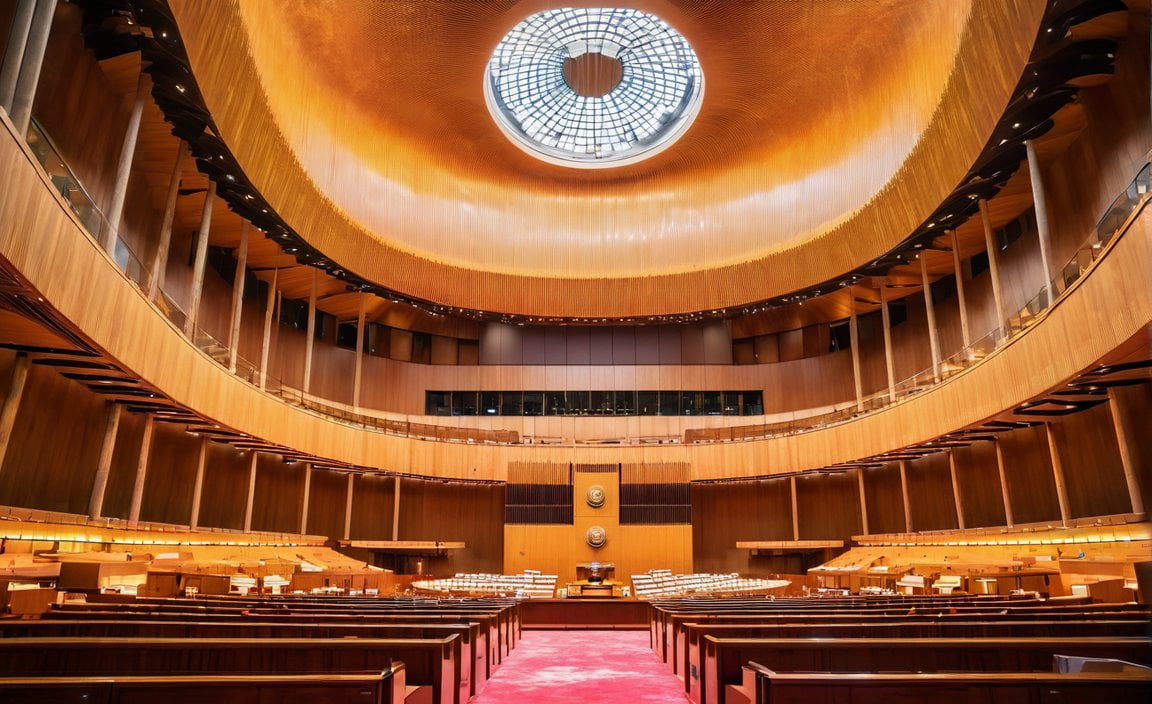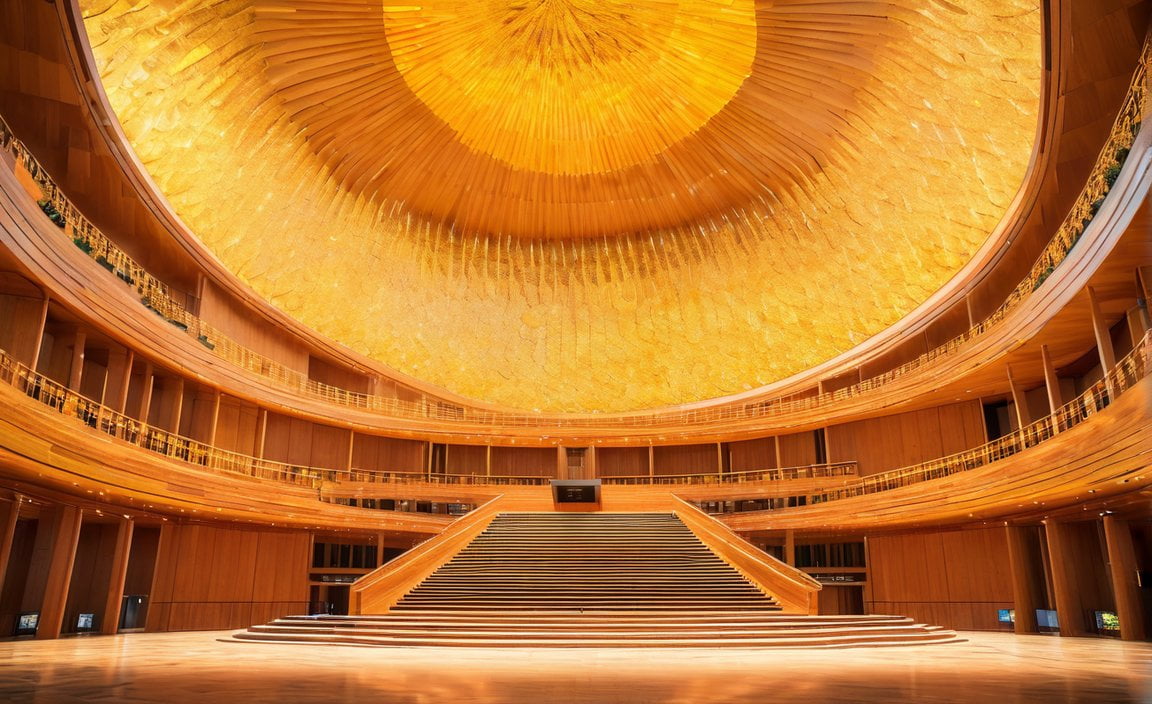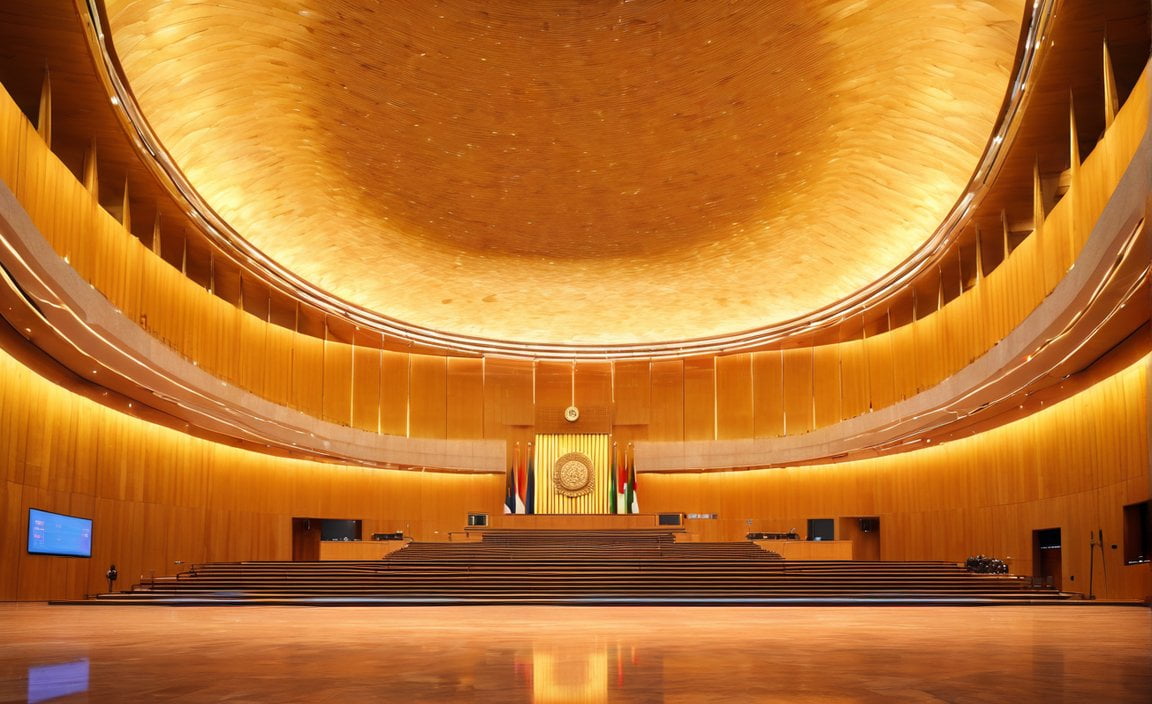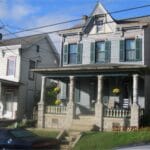Discovering Parliament House: 10 Intriguing Facts brings you an insightful exploration of the iconic institution that serves as the heart of democratic governance. Unveiling captivating details about Parliament House, this article delves into its rich history, intricate workings, and the fascinating stories held within its walls. From its architectural marvels to its significant role in shaping national policies, join us as we unravel 10 captivating facts that shed light on the inner workings of this renowned symbol of democracy.
Key Takeaways:
- The Houses of Parliament in the UK are owned by the monarch and are color-coded, with gold for the Monarch, red for the Lords, and green for the Commons.
- The Houses of Parliament had a smelly past due to the lack of proper sanitation systems before the mid-19th century.
- Despite modern advancements, the Houses of Parliament still maintain some amenities from the past, such as spacious dining rooms and the historic pub called the Strangers’ Bar.
- The House of Commons in the UK was rebuilt after being heavily damaged during World War II, with contributions from Commonwealth countries.
- The House of Commons has fewer seats than the total number of MPs, which sometimes requires MPs to stand or find seating on benches in the aisles.
- The Black Rod is an officer of the House of Lords responsible for maintaining order, symbolizing the independence of the House of Lords from the Monarch.
- Parliament House in Australia was designed to last for 200 years and has 4,500 rooms, accommodating the various functions of the Australian Parliament.
- Parliament House in Canberra attracts approximately 1 million visitors each year and offers guided tours to enhance public understanding of the democratic process and the role of Parliament.
10 Facts About Parliament House

The Houses of Parliament hold a rich history and intriguing secrets that span centuries. In this article, we will explore 10 fascinating facts about Parliament House, shedding light on its origins, unique features, and significance in the democratic process.
1. The Houses of Parliament are Property of the Monarch
Did you know that the Houses of Parliament in the UK are owned by the monarch? This iconic institution holds different sections, each represented by different colors. Gold symbolizes the parts used by the Monarch, red for the Lords, and green for the Commons[^1^].
2. Color-Coded Hierarchy
The color-coded distinction within the Houses of Parliament is not merely decorative. Originally, the hierarchy of color reflected the relative importance of each element of Parliament. Gold for the Monarch, red for the Lords, and green for the Commons[^1^]. A visual representation of the power dynamics.
3. A Smelly Past
Before the mid-19th century, the Palace of Westminster, also known as the Houses of Parliament had a smelly past. The lack of proper sanitation systems caused foul odors emanating from overflowing cesspits. It wasn’t until the installation of proper sewage systems that the building breathed fresh air again[^1^].
4. Ancient Amenities
Despite modern advancements, the Houses of Parliament still retain some amenities from days gone by. Members of Parliament (MPs) have access to spacious dining rooms and a unique historic pub called the Strangers’ Bar. These spaces allow MPs to unwind, network, and discuss matters of importance[^1^].
5. Rebuilding after World War II
During World War II, the House of Commons endured heavy bombings. However, thanks to the contributions from Commonwealth countries, the chamber was restored to its original grandeur. This collective effort emphasized the resilience and determination of the parliamentary system[^1^].
6. More MPs than Seats
The House of Commons, where Members of Parliament sit, has fewer seats than the total number of MPs. Consequently, during significant debates, some MPs have to stand at the back or find seating on the benches in the aisles. It serves as a reminder of the dynamic and evolving nature of democracy[^1^].
7. The Black Rod Tradition
The Black Rod tradition is a symbol of the House of Lords’ independence from the Monarch. An officer known as the Black Rod is responsible for maintaining order in the chamber. The name “Black Rod” derives from the black staff carried by the officer. This tradition has been upheld since the 14th century[^1^].
8. Parliament House in Australia
Beyond the UK, Parliament House in Canberra, Australia, is an architectural marvel designed to stand the test of time. It reaches a height of 81 meters and is constructed to last for an impressive 200 years[^2^].
9. 4,500 Rooms
Parliament House in Canberra boasts an astonishing 4,500 rooms, including offices, committee rooms, and public spaces. This vast expanse caters to the various functions and activities of the Australian Parliament. It is a true testament to the magnitude of democratic governance[^2^].
10. A Visitor’s Haven
Parliament House in Canberra is not only a place for governance but also a popular tourist destination. Welcoming approximately 1 million visitors each year, it offers guided tours and serves as an educational hub where visitors can learn about the democratic process and the role of Parliament[^2^].
Now you have a deeper understanding of Parliament Houses in both the UK and Australia. These 10 intriguing facts provide a glimpse into the history, significance, and unique aspects of these iconic institutions.
Sources:
[^1^]: Top 10 Amazing Facts about the Houses of Parliament
[^2^]: Parliament House – Parliamentary Education Office]
Here are some interesting facts about Lake Superior:
– 10 facts about Lake Superior
And if you want to learn more about the beautiful city of Ottawa, check out these intriguing facts:
– 10 facts about Ottawa
The historical events that took place in Parliament House

Parliament House, located in London, United Kingdom, is not only a center of political activity but also a witness to significant historical events. Here are some intriguing facts about the historical events that have taken place within the walls of Parliament House.
1. The Gunpowder Plot of 1605
In one of the most infamous events in British history, a group of conspirators planned to blow up the House of Lords during the State Opening of Parliament on November 5, 1605. Known as the Gunpowder Plot, their aim was to assassinate King James I and overthrow the Protestant government. However, the plot was foiled after an anonymous letter tipped off the authorities, and one of the plotters, Guy Fawkes, was discovered guarding the explosives in the cellar.
2. The English Civil War
During the mid-17th century, England was embroiled in a bitter civil war between the Parliamentarians, led by Oliver Cromwell, and the Royalists, loyal to King Charles I. The conflict was characterized by intense political and religious divisions, ultimately resulting in the defeat of the Royalists and the execution of King Charles I in 1649. Parliament House became the central stage for the political debates and power struggles that shaped this pivotal moment in British history.
3. The Suffragette Movement
In the early 20th century, the fight for women’s suffrage gained momentum, with suffragettes demanding the right to vote. Many suffragettes carried out acts of civil disobedience and protest, including chaining themselves to Parliament House railings. The suffragette movement played a crucial role in shaping the democratic landscape in the United Kingdom and paved the way for equal voting rights for women.
4. Churchill’s War Room
During World War II, with the threat of air raids, Prime Minister Winston Churchill and his war cabinet retreated to a fortified bunker beneath Parliament House known as the Churchill War Rooms. These rooms served as the nerve center of Britain’s wartime efforts and provided a safe space for strategic planning and decision-making during the height of the conflict.
5. The Devastation of the Blitz
Parliament House and its surroundings were not spared from the devastation of the Blitz, a series of German bombing raids on London during World War II. In May 1941, the House of Commons was destroyed by incendiary and high-explosive bombs. However, determined not to let the spirit of democracy be extinguished, the House of Commons was eventually rebuilt with contributions from Commonwealth countries, symbolizing the resilience and determination to preserve British democratic values.
6. The Passing of Historic Legislation
Parliament House has been the site of numerous historic legislative actions that have shaped the course of British history. From the Magna Carta in 1215, which established the principle of the rule of law, to the abolition of the slave trade in 1807 and the legalization of same-sex marriage in 2013, Parliament House has been the stage for significant social and political progress.
7. Protests and Demonstrations
Throughout history, Parliament House has been a hub for protests and demonstrations. From suffragettes advocating for women’s rights to anti-war movements and calls for social justice, the grounds of Parliament House have echoed with the voices of those seeking change. This iconic institution has witnessed the power of peaceful assembly and the democratic right to free speech.
8. The Falklands War
In 1982, tensions between the United Kingdom and Argentina over the Falkland Islands escalated into armed conflict. The House of Commons played a vital role in discussions and debates surrounding the war, shaping the government’s response and providing a platform for dialogue regarding one of the most significant military conflicts in British history.
9. State Opening of Parliament
The State Opening of Parliament, a ceremonial event held annually, marks the beginning of a new parliamentary session. The monarch delivers the Queen’s Speech, outlining the government’s plans and legislative agenda. This enduring tradition highlights the importance of the monarchy and its relationship with Parliament, showcasing the historical and constitutional significance of Parliament House.
10. Restoration and Preservation
Parliament House itself has undergone significant restoration and preservation efforts over the years. The iconic Big Ben, the famous clock tower within Parliament House, underwent a major renovation project to ensure its continued accuracy and longevity. These ongoing efforts to protect and preserve the historical significance of Parliament House ensure that future generations can continue to appreciate its grandeur and learn from its rich history.
Key Takeaways:
- The Gunpowder Plot of 1605 aimed to blow up the House of Lords during the State Opening of Parliament but was foiled.
- Parliament House played a central role in the English Civil War and the subsequent execution of King Charles I.
- Suffragettes chained themselves to Parliament House railings during the fight for women’s suffrage.
- The Churchill War Rooms beneath Parliament House served as the nerve center of Britain’s wartime efforts.
- Parliament House was destroyed during the Blitz but was rebuilt with contributions from Commonwealth countries.
- Historic legislation, including the Magna Carta and the legalization of same-sex marriage, has been passed within Parliament House.
- Protests and demonstrations have historically taken place on the grounds of Parliament House.
- The Falklands War discussions and debates were held within the House of Commons.
- The State Opening of Parliament showcases the monarch’s relationship with Parliament and sets the government’s agenda.
- Ongoing restoration and preservation efforts ensure the longevity and historical significance of Parliament House.
Sources:
– Discover Walks – Top 10 Amazing Facts about the Houses of Parliament
– The Culture Trip – A Brief History of The Houses of Parliament
The Role of Parliament House in the Legislative Process
The Houses of Parliament in the United Kingdom play a crucial role in the legislative process, shaping the laws that govern the country. Let’s delve into some intriguing facts about Parliament House and its significance in the legislative process.
The Bicameral Structure
The Houses of Parliament consist of three distinct parts: the sovereign, the House of Lords, and the House of Commons. This bicameral structure ensures a system of checks and balances, with the House of Commons acting as the primary chamber. The House of Lords provides scrutiny, revision, and expertise in the legislative process. Together, the two houses collaborate to make informed decisions and shape new legislation.
The Color-Coded Symbolism
The iconic building of the Houses of Parliament is not only architecturally stunning but also symbolically rich. Different colors represent different areas within the building. Gold signifies the parts used by the Monarch, red represents the sections used by the Lords, and green denotes the areas occupied by the Commons. This color coding adds depth and visual symbolism to the institution.
The Great Stink of 1858
In the mid-19th century, the River Thames, flowing near the Houses of Parliament, emitted a strong and unbearable odor due to the lack of proper sanitation systems. This infamous incident, known as “The Great Stink of 1858,” forced Parliament to address the issue of waste management and led to the creation of London’s modern sewer system. The Great Stink serves as a powerful reminder of the government’s responsibility to address public health and environmental concerns.
Preserving Traditions
While the Houses of Parliament are at the heart of modern governance, they still hold a deep reverence for historical traditions. Visitors can immerse themselves in a bygone era as they explore the palace, with its elegant dining rooms and even a historic pub. These historical amenities provide a tangible connection to the institution’s rich heritage while new laws and policies are being debated and formed.
The Commonwealth Reconstruction
The House of Commons suffered heavy damage during World War II, specifically on May 10, 1941, when incendiary and high-explosive bombs destroyed significant portions of the chamber. However, the Commonwealth countries came together in a powerful act of solidarity and determination to rebuild the House of Commons. This reconstruction serves as a poignant symbol of the unwavering commitment to preserving democratic values amidst the chaos of war.
These are just a few fascinating facts about the Houses of Parliament and their integral role in the legislative process. To further explore the captivating history and architectural marvel of Parliament House, check out the following sources:
- Discover Walks – Top 10 Amazing Facts about the Houses of Parliament
- Culture Trip – A Brief History of The Houses of Parliament – Link
Key Takeaways:
- The Houses of Parliament consist of the sovereign, the House of Lords, and the House of Commons, forming a bicameral structure.
- Color coding is used within the building, with gold representing the Monarch, red symbolizing the Lords, and green denoting the Commons.
- The Great Stink of 1858 prompted Parliament to tackle sanitation issues and led to the creation of London’s modern sewer system.
- While embracing modern governance, the Houses of Parliament maintain historical traditions and amenities.
- The House of Commons was rebuilt with support from Commonwealth countries after being damaged during World War II.
SOURCES:
– Discover Walks – Top 10 Amazing Facts about the Houses of Parliament
– Culture Trip – A Brief History of The Houses of Parliament – Link
Facts About the Iconic Features of Parliament House
The Houses of Parliament, located in London, United Kingdom, are not just a political hub but also have a rich history and interesting facts associated with them. Here are 10 amazing facts about the iconic features of Parliament House:
Bicameral Structure: The Houses of Parliament consist of three parts – the sovereign (Crown-in-Parliament), the House of Lords, and the House of Commons. It is a bicameral system, with the House of Commons being the primary chamber.
Color Coding: The building itself is color coded, with different colors representing different areas. The parts used by the Monarch are gold, the parts used by the Lords are red, and the parts used by the Commons are green.
The Great Stink of 1858: The River Thames, which flows near the Houses of Parliament, used to have a strong stench in the past. The smell was so terrible that Parliament even considered abandoning the palace of Westminster. This incident is known as the “Great Stink of 1858.”
Maintaining Traditions: Despite being the home to modern government, the Houses of Parliament still maintain a strong respect for traditions. The palace is filled with historical amenities that take visitors back to the days gone by.
The Commonwealth Reconstruction: During World War II, the House of Commons was destroyed by incendiary and high-explosive bombs on May 10, 1941. However, the Commonwealth took the initiative to rebuild the House of Commons, symbolizing the determination to preserve democratic values.
Impressive Architecture: Parliament House in Canberra, Australia, is also an architectural marvel. It is designed to last for 200 years, with 4,500 rooms and a stainless steel, 81-meter high flagpole.
Educational Destination: Parliament House in Canberra caters to approximately 1 million visitors every year. It is a popular destination for school groups and offers educational tours to help visitors learn about the democratic process and the role of Parliament.
These are just a few intriguing facts about the iconic features of Parliament House, which hold immense historical, cultural, and political significance. To learn more about the fascinating history and architecture of the Houses of Parliament, visit the following sources:
- Top 10 Amazing Facts about the Houses of Parliament
- A Brief History of The Houses of Parliament
Key Takeaways:
- The Houses of Parliament in the UK have a bicameral structure, consisting of the sovereign, the House of Lords, and the House of Commons.
- The building is color coded, with gold representing areas used by the Monarch, red for the Lords, and green for the Commons.
- The River Thames near the Houses of Parliament had a strong stench in the past, known as the “Great Stink of 1858.”
- Despite being a modern government building, the Houses of Parliament maintain historical traditions and amenities.
- The House of Commons in London was rebuilt after being destroyed during World War II by the Commonwealth.
- Parliament House in Canberra, Australia, is an architectural marvel, designed to last for 200 years.
- Parliament House in Canberra welcomes approximately 1 million visitors each year and offers educational tours to learn about democracy.
Sources:
– Top 10 Amazing Facts about the Houses of Parliament
– A Brief History of The Houses of Parliament
FAQ
Q1: Who owns the Houses of Parliament in the UK?
A1: The Houses of Parliament in the UK are owned by the monarch.
Q2: What is the meaning behind the color coding of the Houses of Parliament?
A2: The building is color-coded, with gold representing the parts used by the Monarch, red for the Lords, and green for the Commons.
Q3: What is the historical significance of the Houses of Parliament’s smelly past?
A3: The Houses of Parliament, also known as the Palace of Westminster, had a smelly past due to the lack of proper sanitation systems. Before the installation of proper sewage systems in the mid-19th century, the building had a foul odor caused by overflowing cesspits.
Q4: How many rooms are there in Parliament House in Canberra, Australia?
A4: Parliament House in Canberra features a staggering 4,500 rooms, including offices, committee rooms, and public spaces.
Q5: How many seats are available in the House of Commons?
A5: The House of Commons has fewer seats than the total number of Members of Parliament (MPs), with only 427 seats available.
- Califon Borough, NJ: A Small Town with a Big Heart (and Rich History) - November 22, 2024
- London Aquatics Centre: Dive into Olympic History and World-Class Facilities - November 22, 2024
- Legalize Marinara: How a Sauce Became a Symbol (and a Side of Social Commentary) - November 22, 2024














